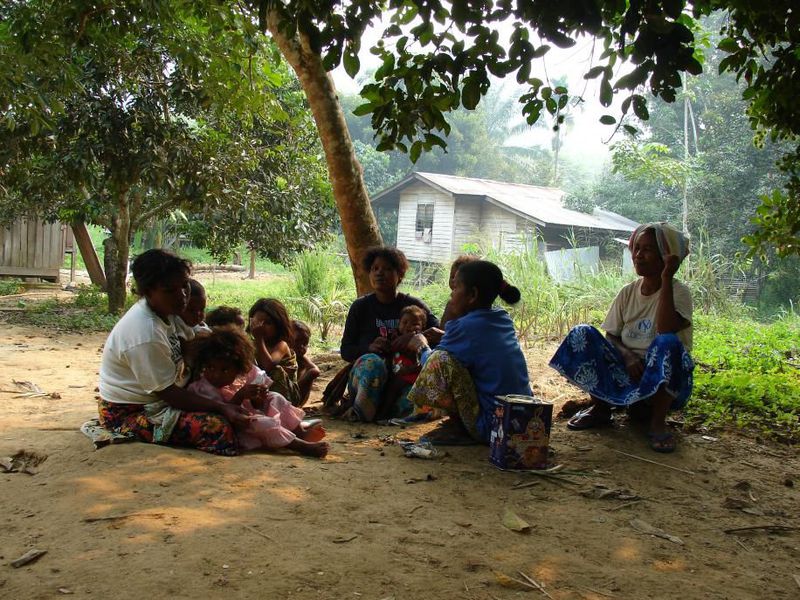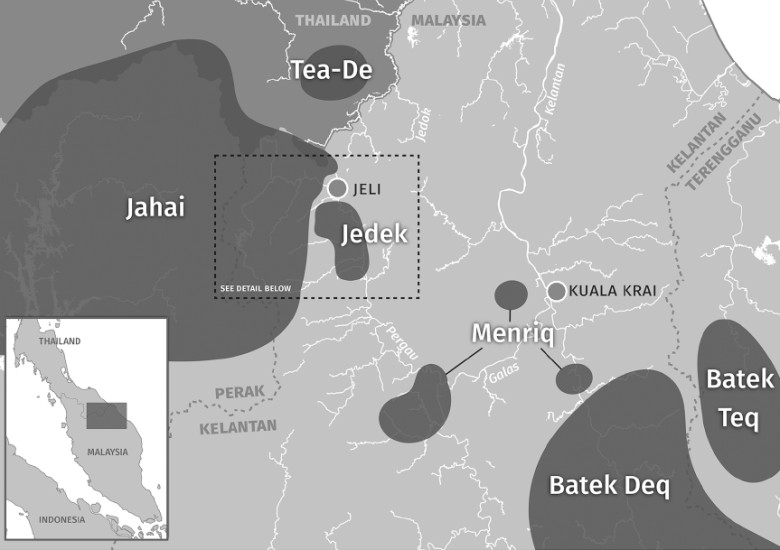Malaysia discovered new language

Residents of the Malay village, natural carriers of the new language, which scientists have assigned the name dzhedek (Jedek)
As of 2009, scientists knew 6909 languages on Earth . It would seem that the list is exhaustive, and nothing new can be discovered. At least among the living languages that someone still uses. But this does not stop anthropologists and linguists from continuing the search. And their efforts were rewarded. Researchers from the University of Lund (Sweden) managed to find a completely new language in a village in the northern part of the Malay Peninsula (Malacca), in the southern tip of the Indochina Peninsula. The peninsula is politically divided between Myanmar, Thailand and Malaysia, and this particular village is located in Malaysia. About 280 people speak an unknown language.
As stated in a press release , the discovery was made during an expedition as part of the Tongues of the Semang project. Semangs - the people inhabiting the internal parts of the Malacca Peninsula. They lead a nomadic lifestyle and retain the originality of a primitive culture. They are divided into 6 groups: jahai, tusk, mendrik, lanoh, kentak and kensiu.
Scientists traveled to villages of ethnic Semang and documented ethnopollo data, collecting information about Asli languages that belong to the Austro-Asiatic language family. Asli languages include about 20 tribal languages that live in this territory.
')

Asli language tree
Discovery made by accident. Researchers studied in one of the villages one of the Asli languages called Jahai - and suddenly discovered that not all the villagers speak it. “We noticed that most of the village speaks another language. They used words, phonemes and grammatical structures that are not found in jahai, ”said Joanne Yager, lead author of the scientific work . “Some words indicated a connection with other Asli languages, which are spoken far in other parts of the Malay Peninsula.” The new language was called jadek (Jedek), since the inhabitants themselves did not have any specific name for it.

Jedek language distribution map (Jedek)
According to linguists , the Dzhedek native speaker cluster is part of a community of hunter-gatherers who once lived along the Pergau River, but later migrated to northern Malaysia.
In an interview, Joan Yager says that the most interesting thing about this discovery is that no one planned to do it. Moreover, in this very village, where they found dzhedek, researchers had already come before - and they did not notice or write down a new language. “We did not know that it exists. There are many languages that are not described and not documented, but we are aware of their existence, ”said Jager. There was not even a thought about the possibility of the existence of an unknown language.
One of the reasons why scientists did not know about the existence of this language is that it does not have a name. The language was named after the most frequently used words of the language.
As linguists write, the language of Dzhedek reflects the cultural characteristics of the community of its speakers. There are no words in it that correspond to property rights, such words as “theft”, “purchase”, “sale”, etc. On the other hand, the language has a very developed lexicon associated with the exchange and sharing of things.
This is due to the fact that there is practically no violence in the village, competition between children is not encouraged, there are no laws, courts and professions - all residents have approximately the same set of skills necessary for hunter-gatherers.
How does jedek sound
Dzhedek - not the first new language discovered in recent years. In 2013, linguists found 800 people in the Indian state of Arunachal Pradesh, who speak an unknown Tibetan-Burman language called koro . At the same time in 2013, linguists in Australia discovered about 350 people in a separate city, Layamanu, speaking in a strange language, Light Warlpiri - a mixture of English and two local dialects. According to scientists, the language was formed in the last few decades, when local residents were increasingly exposed to the English language.
The scientific article was published on December 7, 2017 in the journal Linguistic Typology (doi: 10.1515 / lingty-2017-0012, pdf ).
Source: https://habr.com/ru/post/374251/
All Articles